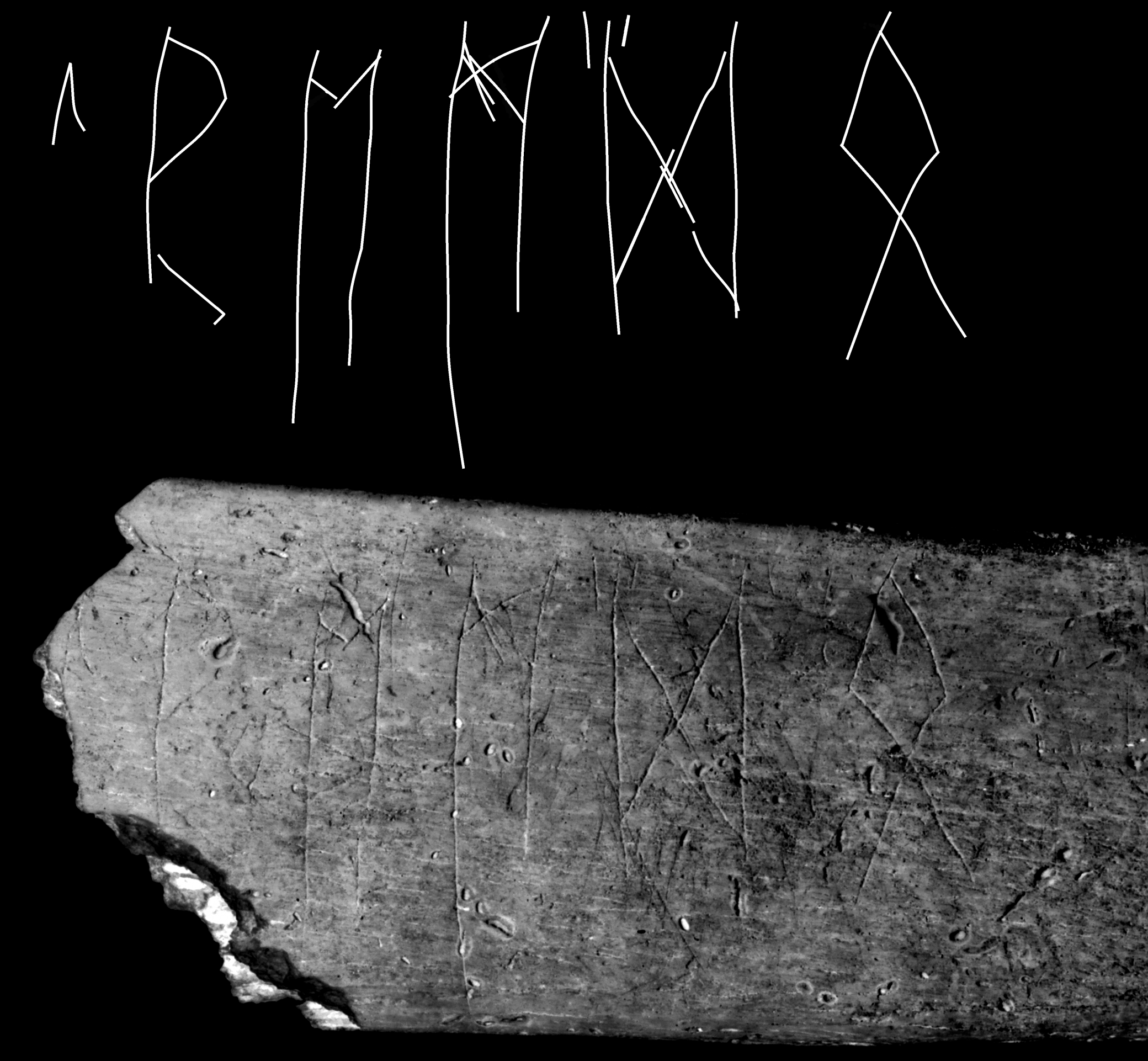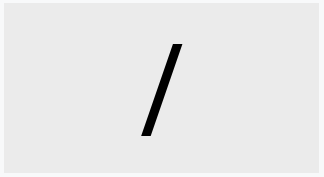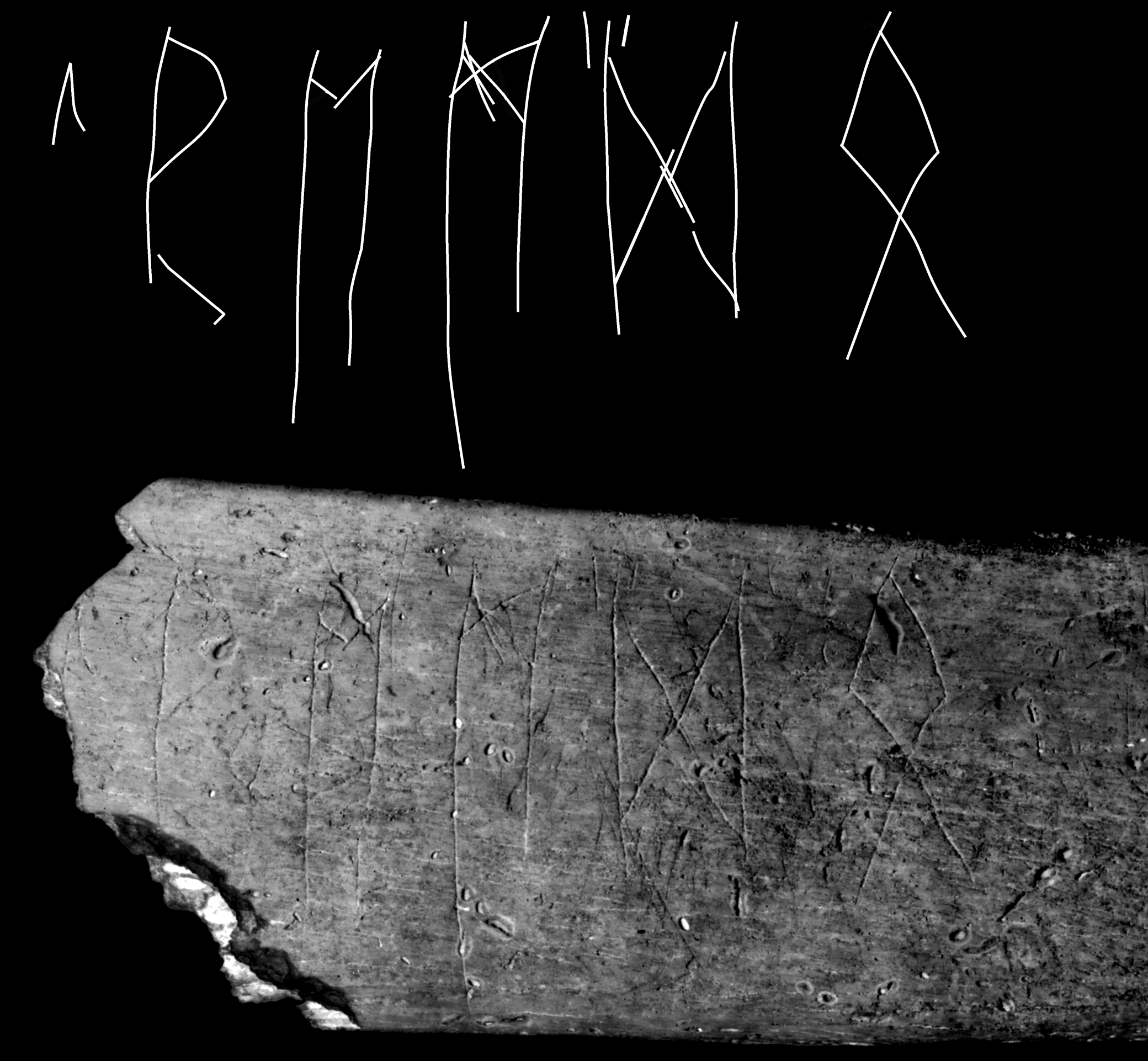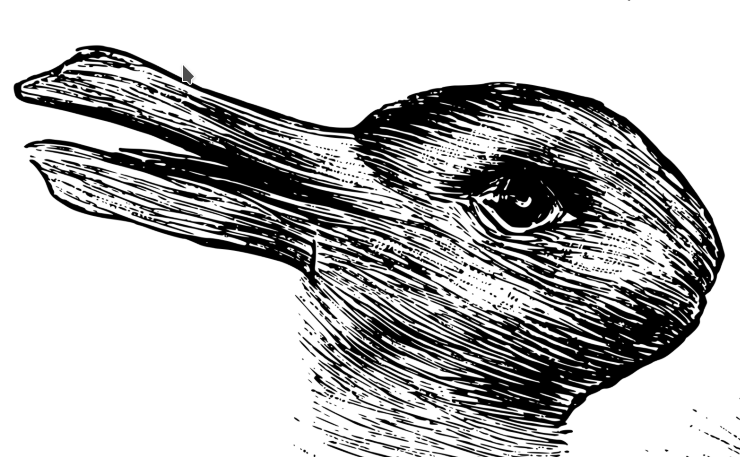Slash-and-blur worldculture

The simplest things have the most names
The simplest things have the most names, as they can arise in more frameworks and their jargons. The named names then develop their own worlds of influence.
The strike or score, a slash or scratch is, almost, the simplest mark. A dot or spot or peck is simpler, but less clearly an intentional mark. And so a stroke is the minimum viable product.
I will use the slash to attend to the blur. [Posts on which are yet to be migrated, or indeed written.]
In short the blur is a type of deliberating epoché. A slash is a way of bracketing, or tabling a notice of, a blur. A blur as a method of reframing or questioning.

The slash or solidus or…
In European scripts, especially in the Fraktur script used throughout Central Europe into the early modern period, the simple stroke or virgule (meaning twig) developed different uses and shapes which become different items of punctuation: the stroke becomes scratch comma, and thus a comma, and then, or also, a full stop or period, and the slash doubled is a caesura mark so useful in critical readings of poetry, and not to be confused with the equals sign, as it leaps off into logic.
/
= ǁ , .
\
|
The usages which '/' garner, all notice or enforce the gap between, as well as elide and/or unite, like map other, despite the gap.
Gap but no gap. See… —a notice of difference/s fill our attention.

To gather into a list, the twigs weave a basket/bag/sack.
To fix the days into a calender, the checks ticks our days into a year of months 2023/07/05 .
The mark separates but connects, or divides and thus unites in some ratio, which has now come to denominate fractions ½, and develop these into a sea-level like datum of proportion in %, that can proudly identify some cultural group or other: two-percenters.
The strike that cuts, marks our days in the world, but also rounds the year, the score judges both sides. The notice holds one in mind as it counts an account of hours into a blur. ①
One use of the slash as a punctuation mark is to list related terms, or merely terms of concern, which puts them on one line but uses the mark to indicate they are really on separate lines, but… —put then together for now.
As such the slash acts like a conjunction like and, or, on occasion, and/or, like… —you know. ②
But I’ll put them on one line, / you know what I mean. / I’ll just put them here as a job lot, / or list of tasks/to-do-s later

contronym, contranym/autantonym = enantiosemy/enantionymy, antilogy/autantonymy [subset of polysemy]
A word that has two opposite meanings is a contronym. A word that means its opposite is a special case of polysemy where a word has more than one meaning, which is intended is indicated by context/frame/attitude. A contronym can “mean their opposite” because they word with the verb that provides both outcomes. [Movement is prior to categories.]
Cleave can mean "to cling" or "to split apart".
Clip can mean "attach" or "cut off".
Dust can mean "to remove dust" (cleaning a house) or "to add dust" (e.g., to dust a cake with powdered sugar).
Fast can mean "without moving; fixed in place", (holding fast, also as in "steadfast"), or "moving quickly".
Ravel can mean "to separate" (e.g., threads in cloth) or "to entangle".
Table can mean "to discuss a topic at a meeting" (British English) or "to postpone discussion of a topic" (American English).
A slash can cleave
The slash has had and will have many uses in writing, or mark making which also include: formal logic, mathematics, computing, coding, counting, scoring runes on wood by other means.

In some of these uses the slash shares that movement that unites the opposites, or, at least, potentially shares that movement the contronym illustrates, by roughly/crudely/quickly chucking things into the same chunk. In experiment, in conversation.
However, today, it is the contronymic facility in cleaving to and cleaving apart, in the use of a score that both marks and spaces, that I want to use in listing items in order to “re-unite” them.
I re-unite them in order to re-frame questions that are perhaps too silly for words otherwise. Where a usage separates a thing X from other things, it does not mean it (X) arose when it was separated.
It is as if blurring things helps us see more clearly — perhaps by adding chaos to a noisy signal, lifting the imperceptible ‘signal’ into notice.

The slash… —as a figure of speech
In our late age of the emojis, only moments before generative 'AI' can visually whip up any emotion in any style, sooner than we can cough, it is no wonder that the talk of glyphs has entered our actual verbal gestures aloud and alive. LOL.
We have a folk blur with the use of the slash. It is my inspiration. I will take a common usage of the “/” in speech and elaborate it into a practice. (② also)
The slash is common enough to be verbalised by people in conversation, much like people “air quote” words with their fingers in order to italicise them. In short, people will list/enumerate/lump words to avoid getting too deep into discussion as to which is most appropriate. This list of things/concepts/ideas/causes has then been ‘tabled’— in both the American and British senses of the contronym. It’s a “whatever” function of general indications. A bracketing command to ‘hold that thought’ while we…
Work slash life balance.
①Occasionally I’ll throw in a back slash to highlight a central term to the discussion, perhaps in order to cuddle it. I.E. mother/child\love.
② Sometimes “slash” as a word is also used like a verbal em dash — to break up and shift to some new topic. Often in this case, it is used to say aloud a notice of a discontinuity. As noted the usages of the simplest mark is varied and ever growing.
③ Image of runes on bone from Macháček, Jiří, Robert Nedoma, Petr Dresler, Ilektra Schulz, Elias Lagonik, Stephen M. Johnson, Ludmila Kaňáková, et al. “Runes from Lány (Czech Republic) - The Oldest Inscription among Slavs. A New Standard for Multidisciplinary Analysis of Runic Bones.” Journal of Archaeological Science 127 (March 1, 2021): 105333. https://doi.org/10.1016/j.jas.2021.105333.
A version of this post first appeared on substack in July 2023. This contains about half of that one, so there will be a follow-up expanding on slashing to the blur.
